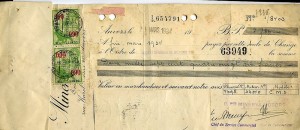
As discussed in articles 1 and 2 on financing (see previously published articles), capital is collective wealth that is invested in industry, finance is the mechanism by which investment operates, and international finance is the process whereby the wealth inherent in one nation is used to develop another nation.
It is often profitable to demonstrate fundamental principles through the use of concrete examples: let use the case of Dr Frank. The good doctor grosses a very comfortable yearly income of R800 000 – most of this is from his practice, but a portion is earned from the property for rent that Dr Frank owns: Dr Frank bought some of the property for sale in Grahamstown some years ago and rents it out to students at Rhodes University.
He uses R600 000 of the total amount to live off of: a certain amount goes towards the purchasing of assets, another amount to professional organisations, another to consumable commodities, another to a yearly holiday, etc. Dr Frank saves R200 000 (a full quarter of his income) by cutting back on luxury items, and consequently wants to invest this capital offshore through international finance (Dr Frank had some friends who had some years ago earned good returns from system known as geographical distribution).
The system of geographical distribution operated under the assumption that risk could be minimised by investing money in as many different countries as possible: in this way the risk arising from factors like climatic or political disturbances can be minimised by spreading that risk as thinly as possible. In effect, the situation that we have is one where Dr Frank, who earns an income from diagnosing and prescribing for his clients, uses that income to invest in the development of different countries around the world. In return for assuming the risk of lending his capital to foreign governments, some of the profits that are generated via the development of localised infrastructures return to Dr Frank along with his initial investment amount. In this light, it can be seen that both the good doctor and the society to whom he lent capital benefit from the relationship. The mechanics of this arrangement are described in greater detail below.
Dr Frank is a client of a bank at which he has opened an account. The account is the safe-house where he is able to deposit the fees he receives for the consulting and treatment he offers to his own clients. As long as Dr Frank’s money is in a bank account, the bank has access to that money for investment purposes: not much of that capital is likely to be invested in foreign projects. A large percentage of bank investment is in the local securities market, the home loans market and other asset investment. However, banks may also use part of the funds that they have access to purchase bills of exchange that might well be drawn by merchants and financiers from a variety of different countries. In this way, the doctor might already be participating in the dynamics of international financing without his even knowing it, which makes the demand here of explaining this process in some detail.
The second part of this article (Bills of Exchange 2) will pick up where we are now leaving off, and will continue our discussion on the banking system.